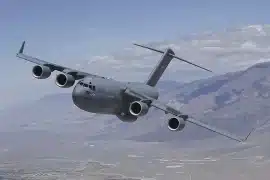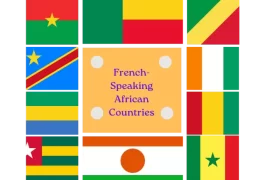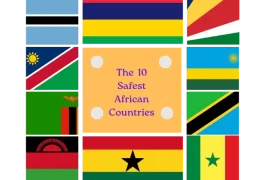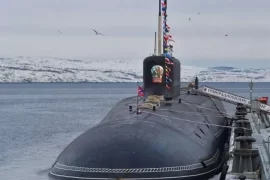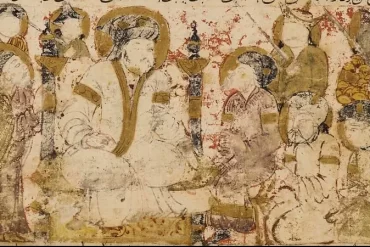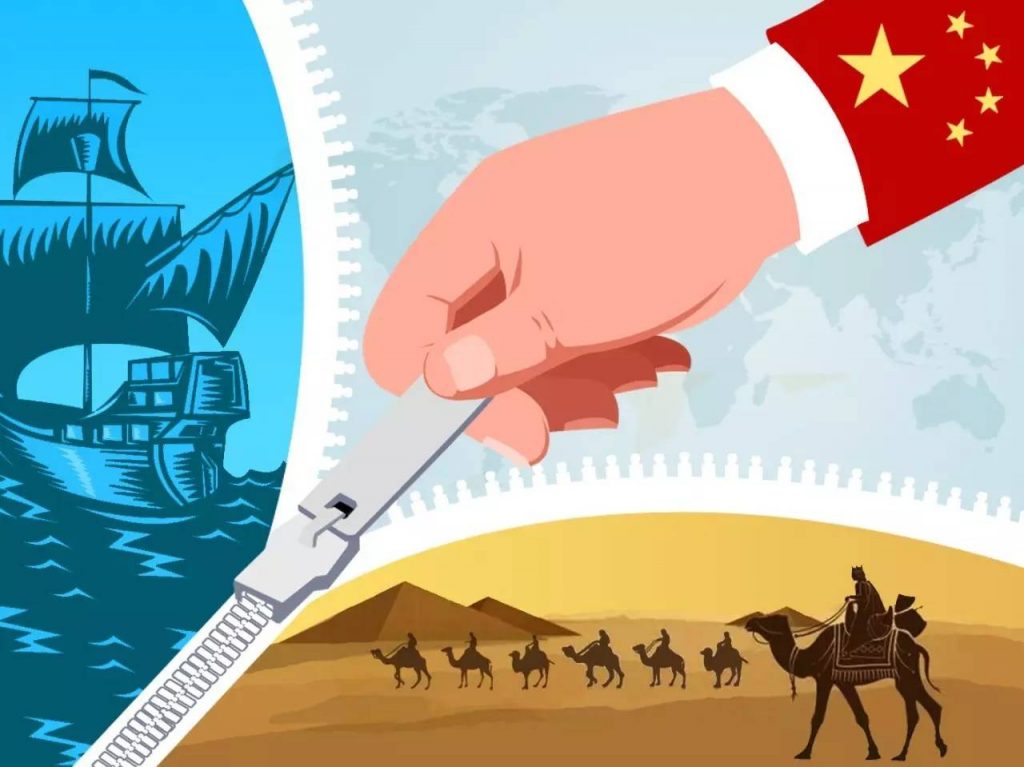
Globalisation designed by the ‘Anglo-American establishment’, led by the Western world, has failed much of the globe’s inhabitants. Based largely on destabilisation, exploitation, militarisation and over-financialisation of the global economy, it has resulted in death, destruction, chaos and economic and social inequality of unmatched proportions.
Veteran journalist Pepe Escobar sarcastically wrote that even the World Economic Forum in its last gathering “suddenly discovered that globalisation as we know it fosters massive inequality, as much as globalisation’s self-appointed managers remain inflexible about their moral right to bend whole nations to their will.” The result: eight individuals on planet Earth today own as much wealth as the poorest 50 percent of the world combined, on account of the neo-liberal economic policies pursued by the Western elites which they gladly shoved down the throats of everyone else, combined with the hawkish foreign policy of Western nations.
Even the non-elites of the Western world were not spared. Historian and author William F. Engdhal wrote last year that, “The Federal Debt of the United States, owing to the endless wars its Presidents engage in, as well as the fruitless bailouts of Wall Street banks and Government Sponsored Enterprises like Fannie Mae, is well over 103 percent of GDP at an astonishing $19.5 trillion, or more than $163,000 per taxpaying American and Washington is adding to the debt this year at near $600 billion.”
Meanwhile, countries like Greece and Cyprus have been sucked dry while most European governments are chuffed simply by the fact that their country’s GDP is growing at all, albeit at embarrassingly low rates. Thus, it is completely understandable why even the Western non-elites detest this form of globalisation. And the fact that they do has been made clear by Brexit, the election of Donald Trump, rise of political parties such as the UK Independence Party (UKIP) and Marine Le Pen’s National Front, as well as many other indicators.
As the Western world battles itself over which course of action to pursue next, a new form of globalisation, led by the likes of China and Russia is taking shape. Based on the concept of multi-polarity, mutual agreement and development, the architecture for this new form of globalisation seemingly centres on China’s One Belt, One Road (OBOR) initiative. So what is it about OBOR that is appealing to so many countries across Eurasia?
For starters, it is the largest infrastructure development project ever undertaken, involving about 65 countries, covering 60 percent of the world’s population and a third of global economic output. The Guardian reports that “the Belt and Road initiative is an immensely ambitious development campaign through which China wants to boost trade and stimulate economic growth across Asia and beyond”, by “building massive amounts of infrastructure connecting it to countries around the globe”.
According to the global consultancy McKinsey, “the plan has the potential to massively overshadow the US’ post-war Marshall reconstruction plan,” which basically helped rebuild Europe from rubble, after the devastation of the Second World War. Others too have compared it to the Marshall plan, saying that it is exactly what Eurasia needs to rapidly move forward in improving both the economic livelihoods of its inhabitants, as well as promote peaceful co-existence amongst its diverse groups of people.
OBOR has two main routes, combining together to form one complete circulatory system of trade. On land, Mr. Engdhal writes that it will focus on “jointly building what is being called a new Eurasian Land Bridge from China via Kazakhstan on to Rotterdam. Other OBOR land rail corridors include developing China-Mongolia-Russia, China-Central Asia-West Asia, China-Pakistan, Bangladesh-China-India-Myanmar, and China-Indochina Peninsula economic corridors.”
While at sea, it will focus on “jointly building smooth, secure and efficient transport routes connecting major sea ports along the ‘Belt and Road’ including modern upgraded super port construction that will link present China ports at Haikou and Fujian with Kuala Lumpur’s port in Malaysia at the Malacca Strait passage, Calcutta in India, Nairobi in Kenya and via the Suez Canal to Athens and beyond.”
And the most brilliant aspect of it is the fact that it completely by-passes, or rather transcends, the geostrategic theory proposed by the father of both geopolitics and geo-strategy, Oxford University graduate and co-founder of the London School of Economics, Sir Halford Mackinder. For those who don’t know how important Mackinder’s role in modern geopolitics is, know that both Zbigniew Brzezinski, the author of the “The Grand Chessboard”, and Henry Kissinger (arguably the two most influential geo-strategists since the end of the Second World War), were students of Mackinder’s work and had outlined much of their own geostrategic designs and conclusions from it. So what was Mackinder’s theory?
Well, first let us look at how he had divided up the entire world geographically, into just a few regions. 1) The ‘World Island’, an area roughly comprising the interlinked continents of Europe, Asia, and Africa. 2) The offshore islands, including the British Isles and the islands of Japan. 3) The outlying islands, including the continents of North America, South America, and Australia. The most important of these, according to Mackinder and later Brezinski (as he makes clear in his book The Grand Chessboard) is by far the World Island and in particular, what is called the ‘Heartland’.
One look at the global map should make that self-evident, but in Brezinski’s own words, “How America ‘manages’ Eurasia [including the Heartland] is critical. A power that dominates Eurasia would control two of the world’s three most advanced and economically productive regions…control over Eurasia would almost automatically entail Africa’s subordination, rendering the Western Hemisphere and Oceania geopolitically peripheral to the world’ central continent. About 75 percent of the world’s people live in Eurasia, and most of the world’s physical wealth is there as well, both in its enterprises and underneath its soil. Eurasia accounts for about three-fourths of the world’s known energy resources.”
The Chinese leadership, through OBOR, has brilliantly shown how it is already way ahead of Mackinder and his pupils. Because through OBOR, it aims to amalgamate, through connectivity, trade and communications, not only the Heartland (via the land part of OBOR), but also the Rimland (The Maritime Silk Road). This completely throws dust into the geostrategic framework followed to a T by the Anglo-American establishment for the last century. As what that means, is that if the West (led by America) is still looking to ‘contain’ China, Russia, or the combination of both, it must control both the sea (which is becoming increasingly difficult with the naval ascendency of both China and Russia) and the Heartland of the Eurasian landmass, almost entirely comprised of a resurgent Russia.
Which, under the circumstances — declining dominance of the Western world, given the slow but sure disintegration of Western economies, largely because of the West’s wars of aggression and disastrous bailouts of zombie banks — is realistically impossible. So over time, China and Russia, through its complete circulatory system, can create a flow of trade which does not depend on what the Western world does at all.
Of course, it is not only China and Russia that are its key driving forces. Neither is OBOR the entire blueprint for the new architecture, although both are perhaps the most crucial aspects of it. Countries like Iran are also very important. Put together, Russia, Iran and China have formed a new kind of a Triple Entente.
The reason why their individual roles are so important is because it is through their separate initiatives that they can bring many more nations together and combine efforts for this new blueprint. China has its OBOR; Russia the Eurasian Economic Union; while Iran helps fit the puzzles together with its key geo-strategic location, connecting the China Pakistan Economic Corridor (CPEC), which the Chinese have so far emphasised to be the most important part of the One Belt (land part of OBOR), with the Western parts of OBOR.
There is just one problem in all of this. And that is India. So far India has been the least predictable piece of the puzzle. While maintaining its historically close relations with Russia, its rivalry with China has clearly seen it move towards the US, signing defence deals that have left many wondering which side India is really on. But the builders of today’s Multi-Polar World Order (The New Triple Entente) seem to have that covered as well.
And the platform through which they are trying to bring India into the fold and not continue on letting its concerns over Pakistan’s involvement in OBOR cloud its judgement, is the Shanghai Cooperation Organisation (SCO), in which, both India and Pakistan were only recently granted full membership. The brilliance of this move cannot be underestimated. During the most recent St. Petersburg International Economic Forum, US journalist Megyn Kelly focused some of her questions to Prime Minister Narendra Modi, on the rivalry between India and China and how that could prevent cooperation between the two countries within different organisations.
PM Modi’s answers were revealing. He said, “He trusts Russia and is willing to cooperate with it in its endeavours”, almost all of which now naturally involves China. It is easy to see why India would eventually participate in the new initiatives involving Russia and China as well, as the benefits it will gain from participating cannot be underestimated.
Pepe Escobar writes, “India imports almost 80% of its energy from the Middle East via the Indian Ocean. Thus, for Delhi, protection of supply chains must be the norm”. Moreover, “Iran, China and India may all eventually converge towards a free trade zone with the Russia-led Eurasia Economic Union (EEU), as the CPEC for its part will allow Russia and Central Asia to boost trade with the Indian Ocean Rimland.” Iran too is expected to be granted full membership into the SCO soon now that the Western led sanctions have been more or less lifted, completing the whole picture.
ALSO READ: CHINA KEEN TO SIGN MOU WITH BANGLADESH ON PPP
Given all of this, Russian analyst Andrew Korybko writes “Altogether, the crisscrossing trade networks in the Indian Ocean and CPEC’s central location in enabling all of this adds credence to the argument that the world is moving towards an Indo-Pacific Century which will see South Asia become the focal point of global geopolitics and economic competition.”
So the blueprint, which had clearly been in the making for a long time, seems to be coming together nicely, drawing up a much-needed new architecture for globalisation anew. China, Russia and Iran are quickly, but carefully, moving forward with their plans. South Asia is now a focal point of global geopolitics.
And here is where Bangladesh comes in. China has already committed to investing huge sums of money here. During President Xi’s visit to Bangladesh in October, 2016, 27 deals worth $24.45 billion in soft loan to Bangladesh were signed between China and Bangladesh for various key development projects. On the sideline, 13 joint venture agreements involving $13.6 billion of Chinese investment was agreed upon by 13 Bangladeshi and 13 Chinese companies.
Bangladesh has also been one of the major recipients of funds from the Asian Infrastructure Investment Bank (AIIB), a key financier of OBOR related projects. For example, it has been agree upon that Bangladesh will receive $60 million to address its gas supply deficit from the AIIB. In a press release, the AIIB said that the fund is meant to help Bangladesh’s Natural Gas Infrastructure and Efficiency Improvement Project as gas shortages would “eventually impact Bangladesh’s energy security and constrain the nation’s economic growth”. Furthermore, back in June 2016, the AIIB had also approved a loan worth $66 million, or Tk. 517 crore, for two power distribution projects to help improve transmission lines in the country.
Meanwhile, it is important to remember that Bangladesh is a member of The Bay Of Bengal Initiative for Multi-Sectoral Technical and Economic Cooperation and had attended the last BRICS summit in India with other member countries. During the summit, President Xi said, “Both groups [BRICS and BIMSTEC] belong to the big family of developing countries” and “share common desires in safeguarding world peace and regional security, as well as the common needs for economic development and improving people’s livelihood and benefits”.
Moreover, there are rumours of a BRICS Plus forming in the near future. Thus, like the other South Asian countries, Bangladesh has been presented with a once in a lifetime opportunity for developing at a rapid pace and taking its destiny into its own hands. And if it can, along with the other South Asian and Eurasian countries, this will truly be the “Eurasian Century” that William Enghadl believes it to be. And the individual countries that won’t, will simply be left behind, just like the dying West.
It is no wonder then, why every country is scrambling to hop-on-board the OBOR train, as combined with all the other projects in the pipeline, OBOR truly is the new architecture for a new, much more promising and peaceful form of Globalisation. And it is two Eurasian countries — Russia and China — that are leading the way, much to the dismay of Western geo-strategists, who have been hell-bent on preventing any “Eurasian power from rising” and challenging “America’s global primacy”, as Zbigniew Grandmaster Chessboard Brzezinski explained, for ages.
Eresh Omar Jamal is a journalist at The Daily Star.

